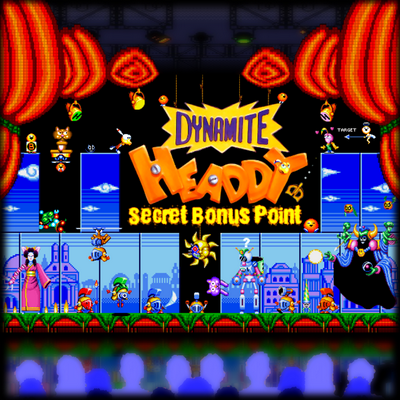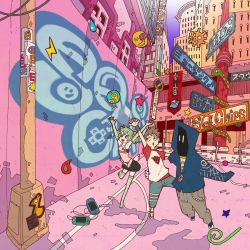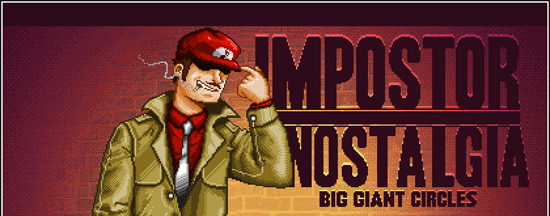Time for another triple review everybody! In this edition, three phenomenal albums will be reviewed; two original, one remix. What are they, you ask? Well, I’m glad you inquired as to this. They are Amphibious’s Oceans EP, Nario’s More of Me, and for those who thought I’d forgotten it, Joshua Morse’s Robot Museum. See, I didn’t go straight from The Missingno Tracks to The Sound of Speed! Anyways, all three shall be reviewed in this one article, by me, Mirby, your one-stop shop for multi-reviews! You can’t find them anywhere other than ThaSauce! And my website… but still. It’s an exclusivity thing, you see? And now, to the reviews!
 AMPHIBIOUS – OCEANS
AMPHIBIOUS – OCEANS
1. Plunge    2:59
This starts off very aqueous, and some percussion comes in at about 0:10. Melody at 0:27. More percussion at 0:37. Keys at 0:47 or so. I’m sensing a pattern here. I feel like I really am plunging here, like I had my Wailord use Dive or something. Another instrumentation at 1:44 or so. The end is near with a reprisal of an earlier part at 2:30.
2. Pelagic Fortress    3:00
I’ll be honest, I’m not sure what pelagic means, but it’s probably something good. Starts off rather ambient, then kicks in at 0:24. Nice melody at about 0:56 or so. Great whistle-thing at 1:18. Breakdown at 1:40 or so. It starts to come back at 1:47. The usage of echoes really gives this album an oceanic vibe; fitting for the title, and the artist’s name. It starts to fade out at the 2:30 mark, very gradually.
3. The Azure Deeps    5:18
Did we enter a deep sea trench here with lava bubbling up from the asthenosphere? I don’t know, but it sure starts off mystical. I’m suddenly reminded of the Serpent Trench from Final Fantasy VI, but just because what I said and not the music. It’s very very ambient until 0:45 when a melody comes in. Very atmospheric. 1:30 brings in some bass, breaking up the ambient background for about 14 seconds. More keys at 1:55 or so. This reminds me of Dave Wise’s infamous “Aquatic Ambience” from the original Donkey Kong Country, both in its vibe and general watery feel. Especially at 2:30. This could very well be a tribute to that track, and that’s a very good thing. It keeps building and building… it feels just like exploring an unknown sector of the sea floor, which is very possible since we know very little about our own oceans. I hope they’re as awesome and mystical as this; I’m loving this vibe. Nice chillout music. 4:15 or so brings in more keys and a reprisal of the original melody back at the 45 second mark. From here it slowly fades until the end.
4. Resurfaced    4:41
Unlike the previous tracks, this one starts off almost immediately with a melody. 0:20 brings in an awesome rhythm. This one… gives a vibe, a vision of ascending back to the surface, to the sunlight and fresh air. 1:05 has nice synth usage. 1:23 may very well be the moment of breaking the surface, what with the sound effect used there. It’s very very calm and mellow until 2:01 when it starts to build up triumphantly. 2:25 brings in a rhythm that just adds to the victorious theme. It’s like a credits theme; once again, my mind returns to the Donkey Kong Country soundtrack, but this time it’s Donkey Kong Rescued from DKC2 And it’s only reminiscent of them because of the triumphant feel present in the track, the general HELL YEAH I DID IT vibe present. 3:53 keeps this feel going. The end begins at 4:27. Fantabulous work, Amphibious!!
 NARIO – MORE OF ME
NARIO – MORE OF ME
1. gNARly    3:18
Cyril told me recently that this song is the result of a Double’s Dash Compo between him and Nario; sounds good. Nice and chiptacular. And not gnarly in any way, shape, or form. It’s rather groovy. 0:52 brings in a change-up in speed. I feel like I’m running around in a pixelated wonderland. Especially at 1:37 when the hasty rhythm returns. Breakdown at 1:58 or so. Back to the rhythm, but with a key change, at 2:37. Another keychange at the three minute mark, to the end.
2. This Pain Is Too Much to Bear (And Screw You, Too)Â Â Â Â 3:30
I like the name, it makes me laugh. It’s like THIS TITLE IS KIND OF EMO AND SCREW YOU FOR MENTIONING IT. Nice usage of panning at 0:30. Another hasty rhythm follows shortly after. Nice work here, Nario! You know, it’s nice to talk about Nario without there having to be a dance pad mentioned somewhere. Slow part at 1:25 or so, that builds, and the panning is still in effect. Pause at 1:58, with what could be the pause screen melody right after. 2:21 shows signs of life in the track as it starts to build back up piece by piece. And another piece at 2:33, and then back to full force at 2:43 with a chipsolo. 3:05 brings the rhythm back once more, and keeps on building on that until the end.
3. Drive-In Dance Club    3:35
Ooh, a drive-in dance club! Wonder if they have dance pads here… oh wait. Anyways, aside from the jest, this has a groovy rhythm right off the bat. 1:04 shows a possible change-up, and it keeps on taking this path until 1:36 with a slight breakdown. It’s something different, that’s what’s important. 1:52 has a chipsolo. 2:07 adds a melody in the background to the chipsolo rhythm. 2:23 adds another layer to that melody. Slight switch-up at 2:53 or so, signaling the impending end. This impending end begins at 3:25.
4. Chips of the Penguin    2:30
I didn’t know penguins liked chiptunes. Regardless, this does have a slightly frosty vibe to it. Switch-up at 0:49, and back to the norm at 1:10. Nario is great with his chiptunes, that’s for sure. This sounds just like something I’d hear in a classic game from yesteryear. Or Game Center CX aka Retro Game Challenge… which amounts to the same thing, really. The end starts at 2:27.
5. Chilled Pop Cherry Soda (8-Bit Mix)Â Â Â Â 2:24
It says 8-bit Mix, not one sound mix. But another sound gets added in quickly, and 0:20 puts one more in, and 0:30 puts one more in. 0:47 shows off some melodius meanderings. 1:32 returns to the normal melody after a brief chipsolo. This continues until the end. Nice track there.
6. Ghostbusters Have Sex With Schala at a Strip Club    3:42
This could be one of the strangest song titles I’ve ever reviewed. Isn’t Schala like… underage? I mean sure it was 12,000 BC but still! Starts off simple, but slowly builds until 0:42 when we have chipdrums. 0:52 gives us some melody. Nice layering at 1:20 or so. Breakdown at 1:48 or so. More layering at 2:02. It’s building and building and building… very nice work with the atmosphere, Nario. Random speed change at 2:42. It’s almost like a completely different song! It stops at 2:56 or so, and picks back up at about 3:08. The end is near at 3:25, when the finale begins.
7. Hands in the Air (feat. cyrilthewolf)Â Â Â Â 3:19
Ah, Cyril. Let’s see what you contribute to the chippiness that is Nario. Starts off simple, but some vocals come in at 0:30. Nice work, Cyril, beautiful! And the chiptunes work perfectly. Chorus at 1:02 or so; it all comes together beautifully. More chorus at 1:48. Also, I’m putting my hands in the air sooo… Bridge at 2:18. Also, isn’t putting your arms up in the sky what every party member in the first six Final Fantasy games did after every battle? Great work! That was wonderful!!
 JOSHUA MORSE – THE ROBOT MUSEUM
JOSHUA MORSE – THE ROBOT MUSEUM
1. Thunder Beam (Mega Man – Elec Man Stage)Â Â Â Â 4:10
This track always was pretty chill… But JM makes it sound like elevator music. And I mean that in a good way. Snapping is mandatory for this track, I’m telling you. A slight breakdown at 0:58. More source at 1:28 or so. Another brief solo at about 2:08. Breakdown at 2:33 or so. The end is near at 3:54.
2. Air Shooter (Mega Man 2 – Air Man Stage)Â Â Â Â 4:20
Oh, Air Man. Contrary to popular belief, you can in fact be beaten. Ooh, nice bass at 0:14; sounds like more standard JM funk is the theme for this track. The bass really bumps in this track, something I’m really enjoying. Guitar at 1:04 taking on the source. After this, I’m gonna have to listen Bramble Reprise. Ooh, solo at 1:54. Heh, I bounced too much and my computer almost slid off my bed. Back to source at 2:38 or so. Epic bass solo at 2:56. Those are words I never thought I’d type, but here they are. And better yet, this bass heralds the end of the track, with more source at 3:28. The end is near at 4:04.
3. Spark Shock (Mega Man 3 – Spark Man Stage)Â Â Â Â 4:50
Spark Man’s stage always annoyed me; too many holes with too many floating enemies above them ready to knock you down them. The music was solid though, and JM’s take on it is just as firm. Starts off muffled a bit, a la 50’s radio, but at 0:30 true JM flavor drenches the track. More source at at 1:31. Seriously, who would’ve thought that all it took to spice up the classic tunes was some of Joshua Morse’s signature funk? 2:31 brings in the solo. Just thinking, I would so want to hear a collaboration between JM and Mustin. That would be pretty awesome. Back to source at the three minute mark. Piano solo at about 3:30. It morphs into a funky free-for-all that fits in fantastically. But afterwards, the end of the track is quite close.
4. Dust Crusher (Mega Man 4 – Dust Man Stage)Â Â Â Â 4:23
And now for a more obscure theme. Most people like Pharoah Man, but Dust Man is cool; he’s the one who got an EXE counterpart! Starts off calm with a very basic rhythm, but at 0:42 the source kicks in with a hollow feeling. 1:45 brings in a decidedly epic part that quickly gives way to another brief bass solo. More source at 2:13. Another calm spot at 2:30, but it gives way to the solo right afterwards. At 3:17, you can tell the finale of the track is quite close. 3:43 brings in more source. It slowly dies at 4:14.
5. Power Stone (Mega Man 5 – Stone Man Stage)Â Â Â Â 4:14
Stone Man, oh Stone Man. You have a wall you can walk through in your stage! Great level design and a great tune! The source kicks in at 0:36. Epic guitar solo at 1:07 or so, followed by another solo. Source returns at 1:52, with epic guitar throughout. Calm spot at 3:08, but it gives way to another solo that heralds the end.
6. Yamato Spear (Mega Man 6 – Yamato Man Stage)Â Â Â Â 4:37
Ooh, what a vibe right off the bat. I liked how Yamato Man had the rivalry with Knight Man and Tomahawk Man. But he got named JapanMan in EXE sooo… Then again, Tomahawk Man became TmhwkMan. Source at 0:37 or so. Groovy and funky, with great source usage and ethnic feel to it. But that quickly gives way to the funk. Everything gives way to the funk; such is the way of funk. Breakdown at 2:29. Source returns at 3:00. This is phenomenal; Mega Man ain’t ever been this sexy! The end is near at 4:20 or so.
7. Slash Claw (Mega Man 7 – Slash Man Stage)Â Â Â Â 4:10
I once replaced Slash Man in a Famicom-styled rendition of Mega Man 7 with my custom Robot Master, Wombat Man. The music remained, of course, as did the jungle stage. Starts off with the lesser-known tropical funk, and at about 0:50 piano comes in with source usage. Slight breakdown at 1:31 that gives way to the source quickly after. This is a great take on the track; solo at 2:50. Back to source around a minute later, and it ends suddenly.
8. Astro Crush (Mega Man 8 – Astro Man Stage)Â Â Â Â 4:12
I still haven’t beaten Mega Man 8, but I did get to the tower stage where you fly around. Think it’s the third one. Regardless, funky to begin with and source comes in at 1:15. 1:45 amps up the funk factor like the funk in the air at Otakon, if reports I’ve received are any indication. Solo at 2:08 or so. Back to source at 2:56. What a groovy rendition of the track. Nice rhythm to end the track.
9. Data Base Accessed (Mega Man & Bass – Data Base)Â Â Â Â 3:31
Aww… I’m sad that this is the last track. But hey, the Data Base is cool. It’s what made Dr. Light canonically a douche. Seriously, his Bad Point in his profile is Douchie. Anyways, a nice mellow track; works great as a counterpoint to the rest of the album. In fact the mellowness of this and Thunder Beam work as bookends, preventing the funk from spilling over into the rest of your music library. Source is used throughout. This is just nice and mellow… how I like it. There’s really nothing of note aside from the general awesomeness of the song.
CONCLUSION
So in this review, I’ve got two albums that were released quite recently, and one that’s been out since March. I’ve been meaning to get around to Robot Museum for a while now, and I figured why not throw it in with the other two? It’s a single artist album, so the formatting would remain the same. And it worked out. This triple review was also awesome for the fact that all three albums are of completely different styles. Amphibious’s is a nice ambient rhythmic album, Nario’s is a chiptune masterpiece, and Joshua Morse’s is a funkadelic ride throughout the classic Mega Man series, sans 9 and 10. And in light of recent events regarding Mega Man, someone needed to give the Blue Bomber some love.
In summation, Amphibious’s freshman effort was well-done; I hope to hear much more from him in the future. And I hope to get lost in fantasy with the aid of his music once more. As for Nario’s album More of Me, well… It’s Nario, so what else can I say? If you need to know more, just look at the album art. Enough said. And lastly, Joshua Morse’s The Robot Museum. As I said in the review, Mega Man ain’t ever been this sexy. And, once more, enough said. All three of these albums are phenomenal, and while some may already have The Robot Museum, Oceans and More of Me are well worth a listen as well. Get them as soon as you are able, and until next time, game on!











